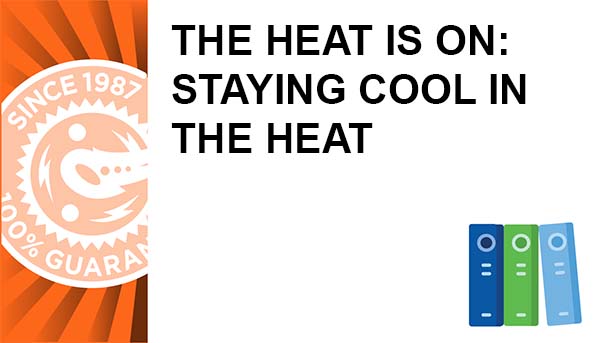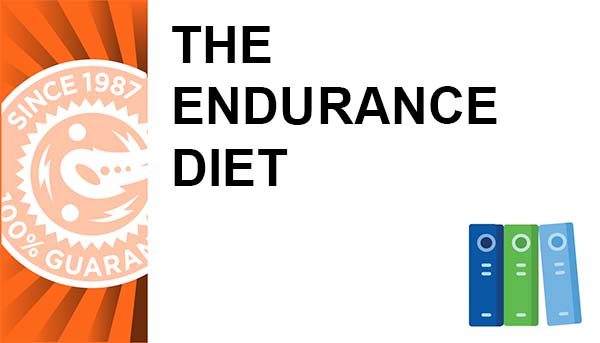By William Misner Ph.D.
ETHYL FUELS AUTOMOBILES NOT HUMANS...
It has been said that more graves in the U.S.A. are dug with a knife, fork, and spoon than any other device. Perhaps another device, the "flask", should also be added to these utensils. Very few of us want to hear that the momentary satisfaction of taste or a "high" from drinking is literally taking years off our lifespans. The average American (and most athletes) consume 135 lbs. of sugar and over 15 lbs. of salt every year. American food fat consumption contributes to 1 out of every 3 teenagers having elevated blood serum cholesterol. Sports Nutritionists recommend: (1) 20-25% calories from healthy, low-cholesterol fatty acids, (2) 1.4 grams per kilogram body weight protein intake (endurance athletes, while as high as 2.0g/kg for strength athletes), and (3) 50-65% caloric intake from complex carbohydrates, each for maximal muscle development progression expected from training efforts. No nutrition scientist advising elite athletes allows alcohol intake during or after training.
Certain organic compounds formed from hydrocarbons juxtaposed by substituting hydroxyl (OH) groups for hydrogen (H) forms C2H5OH, which some fondly call "Booze"; others not-so-fondly term it Ethyl Alcohol, or Ethanol. Any time an athlete introduces the fermented carbohydrates from liquor, wine, or beer into their physiology, pathological changes have been observed to occur to all organs, but are most measureably severe in the liver, brain, peripheral nervous system, and gastrointestinal tract. The purpose of this article is to show how devastating alcohol consumption is to performance gains lost during intense training. It may be effectively argued that proper supplement combinations may enhance training results a minimum of 5% to a maximum of 20%, while consumption of alcohol during any phase of training may result in a minimum of 10% loss to a maximum of 30% loss in the gains possible from intense exercise expenditures.
HOW A SINGLE DRINK DETERIORATES PERFORMANCE GAINS
Ethanol alcohol concentrations are highest in distilled liquor, then wine, and, least of the three, in beer. All consummed alcohol delivers 7 calories per gram weight or 175% more calories than found in their pre-fermented carbohydrate source! Worse yet, these extra alcohol calories bypass the digestive system for direct entry into the bloodstream, causing an immediate insulin spike, but depressing all metabolic endocrine responses. The liver, which is already stressed from dispensing wastes and accrued toxic substances from high volume oxygen-carbohydrate metabolism, is immediately recruited to attend to this noxious invader. The enzyme, alcohol dehydrogenase begins to break it down in the liver, but the result is acetaldehyde, another poison! Aldehyde dehydrogenase is then recruited for enzymatic conversion to acetic acid (vinegar), which is later processed out of the system as CO2 + H2O. This is an extremely S-L-O-W process, only 1/2 ounce per hour! Total sobriety is not hastened by cold showers or coffee, only by not drinking in the first place! The toxic impact of a single drink depresses the entire endocrine system so dramatically that recovery from intense training and strength growth from exercise are cancelled until homeostatic biomarkers are replenished in full. The resultant insulin spike from alcohol "sugars" (fermented carbohydrates or sugared mixers) sweeps blood serum "sugars" for conversion into fats stored in and around the liver or in peripheral body tissues. Since Ethyl Alcohol is virtually void of vitamins and minerals necessary for assimilation into the body, it must deplete valuable energy substrate stores of these micronutrients, robbing the body like an unwanted parasite, predisposing it to premature fatigue during the next exercise session. Depletion of the water soluable "B" vitamins, especially folic acid, and several minerals directly interfere with the effectual operation of the Krebs Cycle upon which endurance performance is dependant. This also directly impedes the storage of available liver glycogen, from which 25% of available blood serum glucose for exercise originates.
MUSCLE GROWTH MECHANISM FOR ENDURANCE AND STRENGTH IS SIGNIFICANTLY SUPPRESSED...
The repressive influence of alcohol effects a decrease in appetite, represses amino acid conversion to glucose (gluconeogenesis), and constrains protein synthesis throughout the musculature, which will effectively abolish the accession of both strength and endurance gains sought from intense training. It has been shown from numerous studies that Human Growth Hormone (HGH) is at its highest after workouts. As a defensive-survival mechanism, the body responds to exercise-muscle demands by increasing muscle fiber size for strength, multiplying the number of muscle mitochondrial cells, proliferating both necessary enzymes and muscle glycogen stores. HGH with micronutrient-rich carbohydrates, and amino acid substrates have an optimal 15-90 minutes to find "reception" at specific muscle cell sites, but only if tissue environment is ideal. All forms of alcohol have been observed to obstruct the ideal tissue environment by breaking down testosterone and transforming strength-building androgens into estrogen. Combined with depressing the rate of normal metabolism, depleting energy micronutrient substrates, repressing protein synthesis, the suppression of HGH is the formulae for ergogenic homocide!
HOW TO INCREASE RATE OF SICKNESS, FATIGUE, ENERGY LOSS, AND TRAINING PLATEAU'S 12-16 OUNCES AT A TIME
A million Americans suffer allergic reactions even when intake of alcohol is modest. The vicarious message is that physiological hypersensitivity seen in others should alert those of us who do not physically react to the detrimental effect which drinking imposes in relatively small amounts. Measureable damage to internal organs occurs with only 4 drinks within a 24 hour period. Even small amounts of alcohol cause systemic dehydration to prevail at a rate high enough to cause brain cell necrosis(death). Though distal to the brain but proximal to the dependant working muscles and of sure interest to the athlete is the the increased rate of perpheral vascular rupturing that also results. A ruptured vein does not efficiently dispose of either waste byproducts during exercise nor allow for recovery afterwards. Alcohol significantly suppresses blood serum biomarkers indicative of a healthy immune system. The result is susceptibility to colds, infection, slower rate of recovery, and injury. Enzymatic functions and assistive free-radical scavengers, which assist in repairing muscle fibers after intense workouts, are virtually nonexistent when blood serum alcohol is present.
THE SPECIFIC POTENT MUTANTS FROM ONE BEER, ONE GLASS OF WINE, OR ONE SMALL COCKTAIL DRINK
Time, tradition, and the mores of our land tend to fix associations for toleration of "good, O.K., and bad" to both behavior and the amount of alcohol consummed. A review of how human physiology responds to intake of a man-made-altered-carbohydrate such as alcohol in even the smallest amounts does not support toleration by this or any society, for any reason.
The one beer you are not concerned about drinking contains Aspergillus Oryzae, a fungus which is suspected to be an active carcinogen. Other additives such as 4 types of preservative sulphites, nitrosamines, FD&C Blue No.1, Red No.40, Yellow No. 5, Propylene Glycol Alginate, and Calcium Disodium EDTA definitively describe Beer as a mutagenic, carcinogenic, and tertogenic "refreshment". The observed adverse human reactions to the forementioned ingredients are kidney damage, blood thinning, bronchial spasms, nasal congestion, headaches, diarrhea, fainting, and gastric distress. While wine usually contains 8% or more ethanol content than beer for the liver to deal with, it also contains several "additives" which may be a detriment to both health and athletic performance. Sulphur dioxides and metabisulphates are injected into grape juice sometime during processing in order to kill grape bacteria or halt fermentation. Add to these Polyoxyethlene-40-Monosterate, Silicon Dioxide, Copper Sulphate, and some Ferrocyanide Compounds and you have transformed healthy grape juice into "the potion for slowing motion"!
Hard liquor contains over double the ethyl alcohol found in beer or wine, which increases dramatically the time it takes to detoxify the system. Mutagenic or carcinogenic additives found in many distilled spirits include Ethylenediamenetetraacetate, Nitrosamines, a variety of artificial colorings, and synthetic creams. Any and all negative-detrimental biochemical reactions occurring within human tissues that do not contribute to general health or the mechanical recovery from the stress of life will contribute to degeneration of both progressive strength and endurance performance. Specifically, a conclusive, documented argument may be offered which suggests an athlete loses up to 25% in performance gains simply by drinking alcohol during intense training. One single ergogenic supplement may enhance performance up to +5% over the same effort applied under the same conditions. The absolute perfect combination of supplements, nutrition, and hard work may net up to +20% in performance gains. Let us therefore not give alcohol the slightest opportunity to erode hard efforts for which we are spent, firmly focused, and intensely impassioned for finishing the race... the best way we can!
REFERENCES
- Werbach MR, Nutritional Influences On Illness, Third Line Press, Tarzana, Calif., 1996:23-28.
- Golan R, Optimal Wellness, Ballantine Books, New York, 1995:171-180, 316.
- Balch JF, Balch PA, Prescription For Nutritional Healing, Avery Publishing Group Inc., Garden City, NY, 1990: 75-76.
- Mindell E, Safe Eating, Warner Books, New York, 1987:125-132.
- Mindell E, Vitamin Bible, Warner Books, New York, 1991:247-249.
- Moses P, "FAQ's about training nutrition", (7.3 Alcohol), Training And Nutrition Request(internet discussion group), 1997:6-7.








